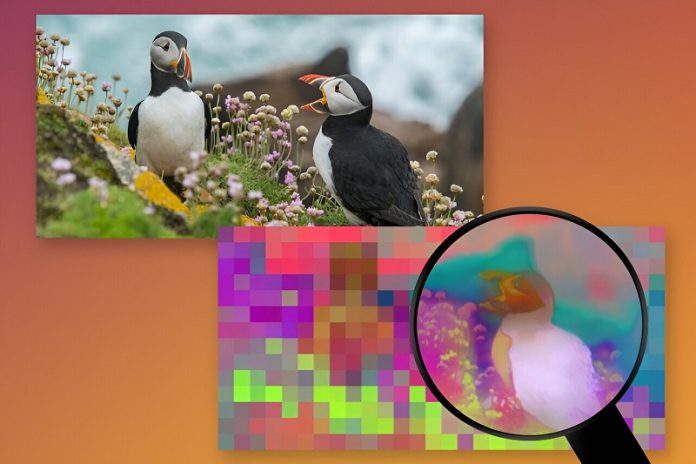
Ever tried remembering every tiny detail of a busy street scene?
That’s tough, right?
Computers have a similar problem when they try to “see” and understand pictures.
They’re great at figuring out what’s in a picture in a big way, like spotting cars, people, and crosswalks. But when it comes to the tiny details, they tend to miss a lot. It’s like they can see the forest but not the individual leaves on the trees.
Researchers at MIT have come up with a clever solution to this problem, making computer vision much sharper, almost like giving computers a superpower to see every little detail.
They’ve created a system called “FeatUp” that helps computer algorithms notice both the big and small things in a picture, all at once.
When computers learn to see, they break down images into small squares, sort of like looking through a grid. Each square is made up of pixels, which are the tiny dots that make up your screen.
Normally, these squares are pretty big, so while the computer gets a general idea of the picture, it misses out on a lot of the fine details.
FeatUp changes the game by preventing this loss of detail. It’s like a boost for the computer’s vision, allowing it to see every pixel of the picture without slowing down or getting confused.
This could be super useful for lots of things, like helping doctors spot tiny signs of illness in medical images, or making self-driving cars better at noticing everything around them.
How does FeatUp do this?
By using a clever trick where it slightly moves the image around and watches how the computer’s algorithm reacts. This process creates a bunch of different views from the small movements, and FeatUp combines these to make a super-detailed picture that the computer can understand better.
The MIT team had to invent a new kind of tool for this because the usual ones weren’t good enough. Their tool makes FeatUp super efficient, allowing it to enhance the detail in pictures for all sorts of computer vision tasks without needing a ton of extra computing power.
For example, with FeatUp, computers can now spot tiny objects on a busy street, like traffic cones or potholes, that they would have missed before. This makes the computer’s vision much more precise, turning vague guesses into exact spots.
This precision is especially important for tasks where time matters a lot, like in driverless cars trying to read traffic signs quickly and safely.
The people behind FeatUp think it could become a basic tool that everyone uses to make computers better at seeing the world in high detail. This could make computer vision much more useful and reliable, especially for jobs that need a clear and detailed understanding of pictures.
Experts from other universities are excited about FeatUp too.
They think it’s a smart way of combining old and new ideas to solve a big problem in computer vision: how to keep all the detail of the original picture without making the computer slow or confused.
The MIT team hopes that FeatUp will help us do more with the pictures we take, letting computers see and understand the world as clearly and in as much detail as we do.



